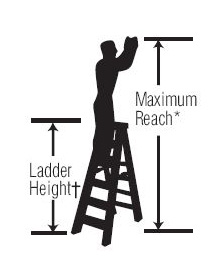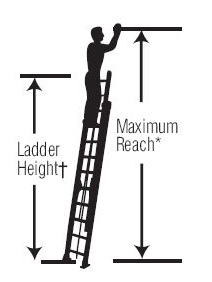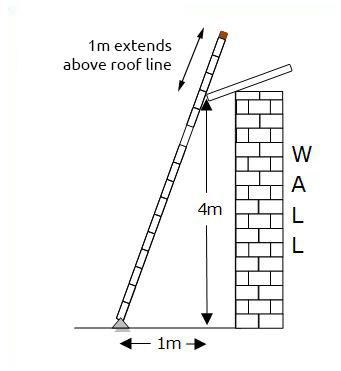Ladder Selection Guide
Choosing The Right Ladder for The Job
Buying a new ladder could be an overwhelming task especially with so many different styles and sizes available to choose from. Using the right ladder for the your job is very important to keep you safe. Here are the steps that can help you in choosing the right ladder for your job:
Step 1. Select The Ladder Style
The first step is to select the ladder style that is right for your job. Various ladder styles are designed with features and benefits to keep you safe while you are climbing or standing on the ladder and also to increase the productivity.
The most common ladder styles are step ladders and extension ladders. Although these two ladder styles may look right for your job, there are actually other ladder styles that are more suitable and specially designed to do the job safely such as platform, telescopic, step extension, tripod and many more.
For example, if you are going to work for a long period of time on a ladder, you should use a platform ladder. It has a large platform area so it is more comfortable and safer as well as it would reduce fatigue comparing with standing on a narrow step on a normal step ladder for a long period of time.
For accessing roof, you must use an extension ladder. If you are unsure of what ladder style you need to use, please call us to discuss your requirements.
Step 2. Select The Right Height
To make sure you select the right height, you need to measure the maximum height that you need to reach. Deduct this with your height and 30cm vertical reach. Add the result with 90cm. This will give you the ladder height that you need to use.
Below is the illustration of the maximum reach.


You also need to consider if you need to reach above your head, at chest level or slightly above your waist level while maintaining three (3) points of contacts.
For extension ladders, it must extend at least 1m above the roof line when using it to gain roof access. Also remember that extension ladders should always be 1m out from the wall for every 4m of supported length.

Step 3. Select The Load Capacity and Duty Rating
Ladders are designed to hold up a specific amount of weight. This includes the weight of the user plus all the tools or materials carried while climbing or standing on the ladder. The total weight must be less than the load capacity of the ladder.
The duty ratings of a ladder are categorised into Industrial and Domestic. Industrial duty rating means the ladder is suitable for Industrial use with a minimum load capacity of 120kg. Domestic duty rating means the ladder is suitable for domestic use with a minimum load capacity of 100kg.
You can only use a ladder with Industrial duty rating and at least 120kg load capacity in all work places in Australia.
Step 4. Select The Material
The last step is to consider if there is any risk of electrical hazard to the user while he or she is working on the ladder. Fibreglass is a better insulator as it is electrically non-conductive hence you should choose the fibreglass ladders over aluminium if this hazard exists. Otherwise, you can use the aluminium ladder.
If you are still unsure of what ladder you need to choose, you can call us on 1300 211 499 or send us an email to sales@laddercentral.com.au. You can also contact us through live chat. Our ladder specialists are more than happy to help you.



